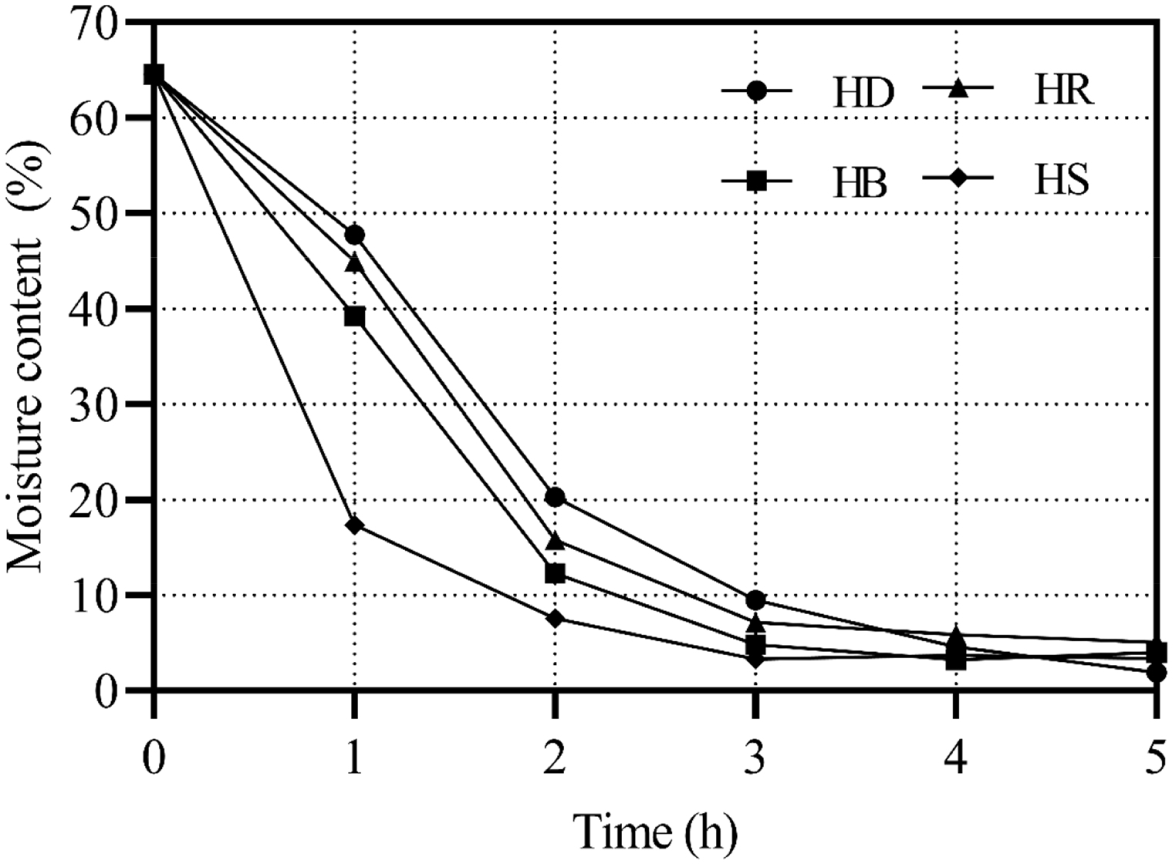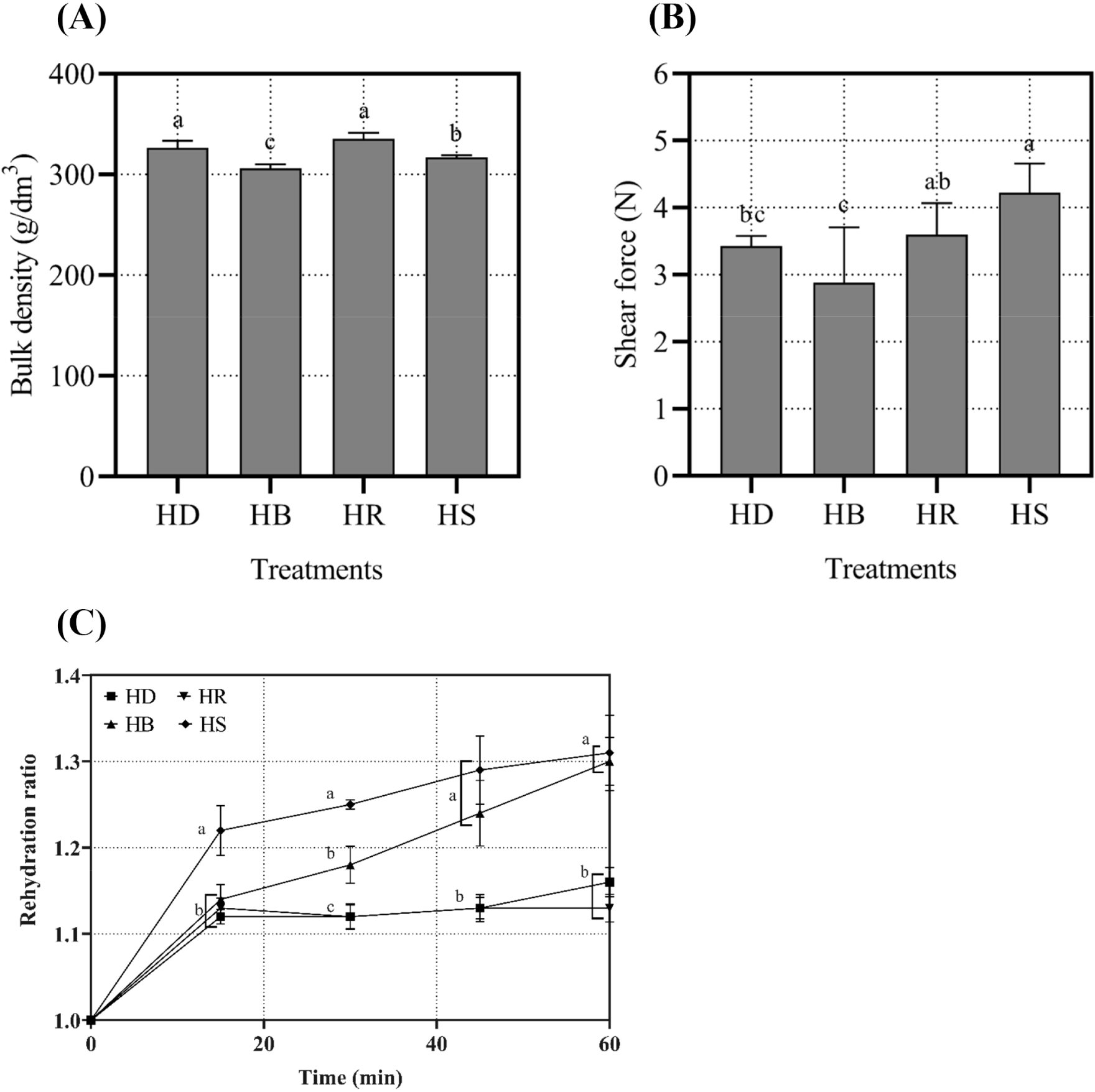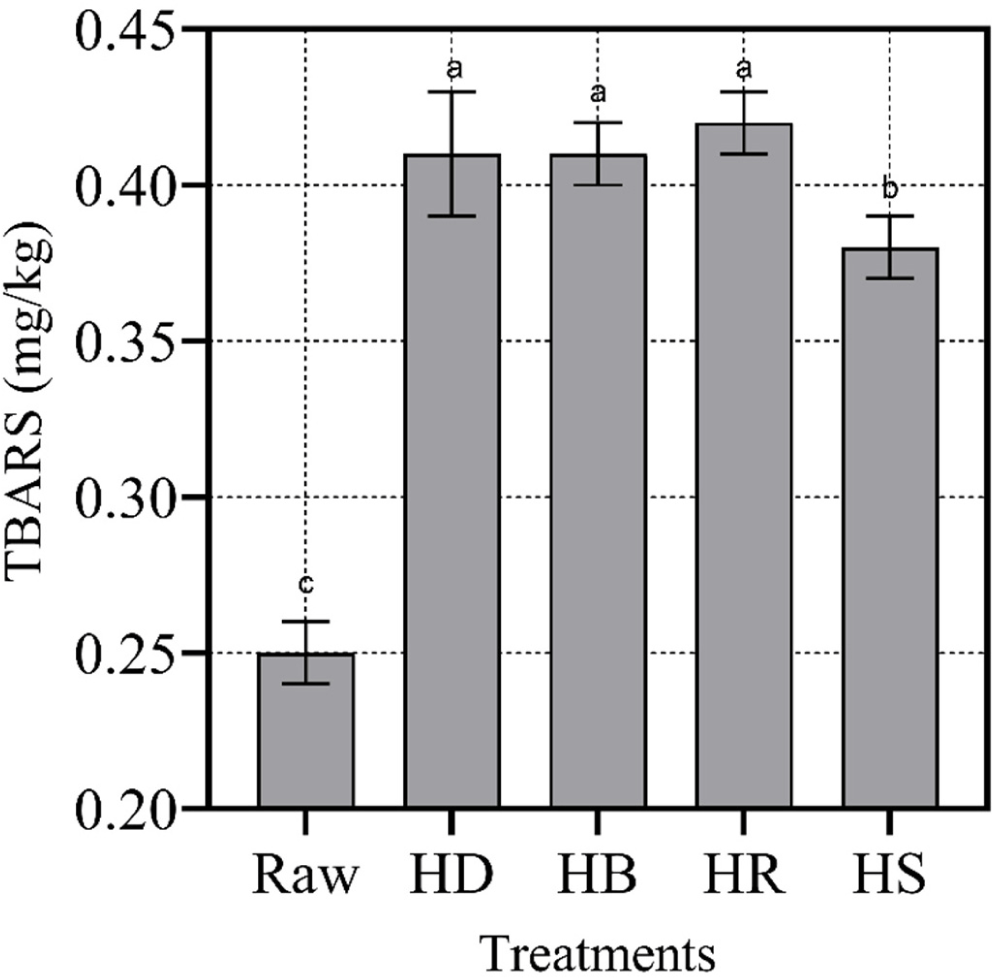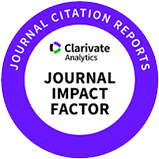Introduction
The consumption of animal protein is increasing worldwide; however, production has lagged behind this demand (Kim et al., 2022a). Due to limitations in current livestock technology, the need for alternative protein sources is rising (Ham et al., 2021). Animal protein production in the traditional livestock industry is also plagued with several additional problems, such as increased pollution and carbon emissions, inadequate animal welfare, and the increased spread of infectious diseases (Kim et al., 2021). Currently, cultured meat, plant protein production, and edible insect technologies are being investigated as potential replacements for traditional livestock practices (Cho et al., 2022). One advantage of cultured meat is that it can be obtained without livestock farming; however, technical issues still limit its use (Lee et al., 2022a). Various industrial advances, particularly regarding safety and ethics, are required before cultured meat can be considered a replacement for animal protein. Further, plant-based protein utilization technologies have already been introduced to replace traditional animal protein, but they are avoided by consumers due to their general lack of sensory and nutritional properties (Purschke et al., 2018). Thus, edible insects are the front-runners to replace animal-based proteins obtained from the livestock industry. Unlike other alternative protein sources, edible insects do not have any special safety, nutritional, or ethical issues except for their unpleasant appearance to consumers (Kim et al., 2022b). Therefore, modifying the appearance of edible insects can allow for their use as an alternative food source (Lee et al., 2021a). According to Lee et al. (2021b) edible insects have superior digestion and absorption properties compared to general meat proteins due to the low molecular weight of their protein content.
Hermetia illucens is considered an economical insect raw material as it survives under harsh conditions, can be easily bred, and can provide protein quickly and efficiently (Müller et al., 2017). H. illucens consists of an average of 40%–44% crude protein and 35%–44% crude fat, making it a nutritionally valuable resource (Lee et al., 2022b; Zheng et al., 2012). Therefore, H. illucens can be used as an edible protein source in the future.
Drying is a processing technique commonly used to increase the shelf life of edible insects by inhibiting microbial growth, enzymatic activity, and browning (Melgar‐Lalanne et al., 2019; Vandeweyer et al., 2017). Pre-drying can reduce the moisture of raw materials without excessive heat treatment by suppressing the growth of microorganisms and increasing the rate of drying (Fombong et al., 2017; Purschke et al., 2018; Saucier et al., 2022). Pre-drying methods include blanching, roasting, and superheated steam blanching. Blanching is the most widely used pre-treatment method because of its high thermal conductivity that effectively inhibits browning enzyme activity (Fombong et al., 2017). Roasting can improve oxidative stability by inactivating enzymes and forming Maillard reaction products capable of terminating lipid oxidation reactions (Elizalde et al., 1991). Superheated steam blanching is a method of transferring heat using superheated steam and can minimize the loss of nutrients dissolved in water during pre-treatment (Xiao et al., 2011).
Therefore, the objective of this study is to investigate the optimal pre-treatment method for improving processing properties by evaluating the quality characteristics of hot-air-dried edible insects pre-treated with blanching, roasting, and superheated steam blanching.
Materials and Methods
Ten kilograms of H. illucens were obtained in triplicate from a natural farm (Jeju, Korea). H. illucens larvae at the 2nd instar were obtained and they were fed on formulas of feed mixtures composed of bio-waste and grown in cement boxes. The fasting larvae were frozen at –20°C. Frozen larvae were thawed at 4°C for 12 h and three different pre-treatment methods (blanching, roasting, and superheated steam) were performed before drying. For blanching, 300 g of larvae were transferred into 3 L of boiling water (100°C) and blanched for 1 min. For roasting, 300 g of larvae were poured into a stainless plate and roasted using a pre-heated steam convection oven (RCO-0600CE, Rinnai, Incheon, Korea) at 200°C for 1 min. For superheated steam blanching, 300 g of larvae were heated using a super-heat oven (QF-5200C, Naomoto, Osaka, Japan) at oven and steam temperature of 120°C for 1 min. Pre-treated samples were dried at 70°C until the moisture content of samples reached 6.5%–7.5% which was measured using a hot-air dryer (HK-DO1000F, Hankuk S&I, Hwasung, Korea). Dried samples without pre-treatment, blanched samples, roasted samples, and superheated steam-blanched samples are called HD, HB, HR, and HS, respectively.
While drying, the moisture content of the samples was measured three times every hour for 5 h using a moisture analyser (MB120, OHAUS, Parsippany-Troy Hills, NJ, USA).
Two grams of samples were homogenized with 20 mL of distilled water, and the pH was recorded using a pH meter (Accumet Model AB15+, Fisher Scientific, Hampton, NH, USA) calibrated using 4, 7, and 10 pH buffers.
A colorimeter (CR-410, Konica Minolta, Osaka, Japan) was used to detect the CIE L*, CIE a*, and CIE b* of the ground dried samples. A white calibrated plate, 2° observers, and D65 laser source were used. The CIE 76 color difference formula was used to compare the color difference (ΔE) of the samples, and the CIE L*a*b* of non-dried samples were used as a reference. Before determined color values of sample, dried sample was powdered using blender (Super grinder JL-1000, Joy Life, Seoul, Korea). Sample was pour into clear plate and their height was 2 cm to block penetration of light.
The amino acid profile was estimated using an amino acid analyzer (Hitachi L-8800, Hitachi, Tokyo, Japan). The samples were hydrolysed using 6 M HCl under nitrogen at 105°C for one day. After evaporating the samples at 40°C, they were dissolved in 0.02 M HCl. The dissolved sample was filtered by a 0.20 μm membrane filter (Thomas Scientific, Swedesboro, NJ, USA), and the amino acid composition was measured using an ion-exchange resin column (4.6 mm i.d.×60 mm). The essential amino acid index (EAAI) was calculated according to the FAO et al. (1985).
Twenty milligrams of lipid extracted from dried insects by chloroform-methanol mixture were dissolved in 2 mL of 0.5 M NaOH. After incubation at 105°C for 10 min, 2 mL BF3 in methanol was added. After cooling, 2 mL of a saturated NaCl solution and 2 mL of hexane were added to separate the fat and aqueous layers. The fat layer was analysed using an HP 6890 series (Hewlett-Packard, Waldbronn, Germany). A flame ionization detector with a split ratio of 100:1. SP-2380 capillary column (100 m×0.25 mm×0.20 μm) was used. The initial, final, injector, and detector temperatures were 130°C, 230°C, 230°C, and 250°C, respectively.
Dried samples were fully poured into a 50 mL mass spectrometer with gentle uniform tapping. The weight of the dried samples in the cylinder was measured to calculate the bulk density (g/mL).
The shear force of the dried samples was measured using a texture analyser (TA-XT2i, Stable Micro Systems, Surrey, UK) attached to a Warner-Bratzler blade with six technical replicates per sample before grinding. The head speed was 2 mm/s, the force was set to 5 g, and the centre of the sample was cut (Kim et al., 2022b).
Two grams of dried intact samples were immersed in 300 mL of distilled water (25°C). The weights of the samples were measured after 15, 30, 45, and 60 min. The rehydration ratio was then calculated as the change in weight before and after immersion, with three technical replicates.
Lipid oxidation of the dried samples was measured using the TBARS method (Tarladgis et al., 1960). Briefly, 10 g of samples and 100 mL of 0.1 M HCl were homogenized and then the homogenate was distilled. Distilled sample reacted with 0.02 M thiobarbituric acid in 90% acetic acid at 100°C for 30 min. After cooling, absorbance at 538 nm was recorded using a UV/VIS spectrophotometer (Optizen 2120 UV Plus, Mecasys, Daejeon, Korea).
SPSS Statistics 20 software (SPSS, Chicago, IL, USA) was used to analyse the data. One-way analysis of variance with Duncan’s range test was performed (p<0.05). To compare the effects of pre-treatment methods, they were considered fixed effects. Pre-treatment and drying was performed in triplicate and all technical experiments were also performed in triplicate. Replicates were considered random effects.
Results and Discussion
As the drying time increased, the moisture content of H. illucens decreased (Fig. 1). The time needed to reach the target moisture content range (6.5%–7.5%) was recorded in the following order: HS<HB<HR<HD; as all three pre-treatment methods were effective in shortening the drying time of H. illucens. The drying rate during the first hour of the superheated steam blanching treatment group was especially higher than that of the other experimental and control groups. This may be due to the collapse of the insect cuticle structure caused by pre-treatment. Coarse and fine microstructured surface wax of the insect has hydrophobic characteristics and can thus interfere with water permeation into the insect body (Boevé et al., 2004). However, hydrophobic characteristics could be broken at high temperatures, and moisture evaporation can be accelerated during the drying process (Saucier et al., 2022). In this study, although HR was treated at a high temperature (200°C), the moisture content of the HS (120°C) and HB (100°C) treatments was reduced more rapidly. This may be due to the presence of water molecules during heating. The waterproof structure on the surface can be melted and hydrophobic components dissolved in steam or boiling water (Wigglesworth, 1990). Therefore, steaming or blanching pre-treatment may be appropriate to increase drying speed.

The pH and color of dried H. illucens subjected to the three different pre-treatments are listed in Table 1. The pH of the raw sample was 5.97 and increased as drying proceeded. HB and HS samples showed the highest pH values (p<0.05), followed by HR and HD. The color results confirmed that the CIE L* of the sample decreased as hot-air drying progressed. The CIE L* of food is closely related to its browning reaction (Yang et al., 2022a). Browning reactions can be either enzymatically or non-enzymatically driven. The high temperatures reached during hot-air drying cause a non-enzymatic browning reaction to occur, leading to lower CIE L* (Azzollini et al., 2016). Therefore, in this study, the low CIE L* of the samples after drying was compared to the raw sample without drying and was related to non-enzymatic browning. However, among the samples subjected to hot-air drying, significantly elevated CIE L* were observed in HB and HS. The effective heat transfer through water and steam caused greater inactivation of the browning enzyme compared to HD and HR (Zhang et al., 2017). Further, CIE a* and CIE b*, indicators of CIE a* and CIE b*, respectively, also showed significant differences among the pre-treatment methods. After blanching and superheated steaming, the CIE a* increased compared to that of the raw sample; however, HD and HR had lower CIE a* compared to the raw sample. In contrast, all hot-air dried samples showed lower CIE b* compared to that of the raw sample. However, similar to the result of the CIE a*, HB and HS showed markedly higher CIE b* than HD and HR. Finally, the ΔE value, which indicates the total color difference, was highest in HD and HR and considerably lower in HB and HS. Thus, we can conclude that blanching and superheated steaming pre-treatment methods can reduce the color change caused by hot-air drying.
The amino acid profiles of dried H. illucens pre-treated using the various methods are presented in Table 2. EAAs should be supplied from the diet as they cannot be synthesized in the human body; however, edible insects can be used to enhance the nutritional value of food (Kim et al., 2022a). In this study, a significant difference existed among the pre-treatment methods regarding amino acid contents. Non-dried edible insects had the highest value in the sum of EAA and EAAI (p<0.05). This may have been due to moisture evaporating during the drying process. However, the protein content of edible insects increased after drying, so dried insects might have a higher nutritional value than raw insects (Kim et al., 2022a). The sum of EAA was highest in the HD and HB treatments (p<0.05) after comparing amino acid composition among dried H. illucens. The EAAI, which can be used to determine the nutritional quality of HS, was similar between HD and HB treatments (p>0.05). Additionally, the EAAI of all treatments exceeded the recommended EAAI values, and therefore, H. illucens could be considered a good protein source.
The fatty acid profiles of dried H. illucens pre-treated using the various methods are presented in Table 3. Compared to the raw samples before drying, fatty acid profile changes were confirmed in all dried samples (p<0.05). First, regarding saturated fatty acids (SFA), the levels of capric acid (C10:0) and lauric acid (C12:0) decreased during drying; however, palmitic acid (C16:0) and stearic acid (C18:0) increased after drying. Second, regarding unsaturated fatty acids (UFA), levels of monounsaturated fatty acids (MUFA), palmitoleic acid (C16:1), and oleic acid (C18:1) increased after drying, whereas polyunsaturated fatty acid (PUFA) and linoleic acid (C18:2) decreased after drying. In particular, the HR sample showed the greatest decrease in linoleic acid (p<0.05). The PUFA/SFA ratio, a major nutritional index of fat (Heck et al., 2019), tended to decrease compared to that of the raw sample during the drying process. However, in the case of HB and HS treated with an additional pre-treatment process, the PUFA/SFA ratio value showed no significant difference from that of HD (p>0.05). In the case of HR, the PUFA/SFA ratio decreased with pre-treatment roasting. However, in all samples, the PUFA/SFA ratio of bovine fat was higher than 0.1 (Öztürk-Kerimoğlu et al., 2021).
Raw, non-dried insect; HD, hot air-dried insect without pre-treatment; HB, hot air-dried insect after blanching; HR, hot air-dried insect after roasting; HS, hot air-dried insect after super-heated steaming; ND, not detected; SFA, saturated fatty acid; MUFA, monounsaturated fatty acid; PUFA, polyunsaturated fatty acid; UFA, unsaturated fatty acid.
Bulk density is a major representative property of granules and coarsely ground solids (soil, protein extracts, and gravel; Mintah et al., 2020). This is an important property of powdered products, due to its significant economic effect on reducing packaging costs (Vanqa et al., 2022). The bulk density results for the protein powder according to the different types of pre-treatments are shown in Fig. 2A. Among the three pre-treatment processes, HR with roasting showed the highest bulk density along with HD. In contrast, HB and HS showed significantly lower bulk densities (p<0.05). This may be due to the fact that HB and HS, which have relatively short drying times, showed less shrinkage owing to heat treatment during the drying process. According to Purschke et al. (2018), the volumetric shrinkage and tissue collapse of the mealworm larvae increased as the heat-treatment temperature increased, leading to an overall increase in density. In addition, when blanching was performed, a relatively low bulk density was observed. This is similar to our study where HB was shown to have a lower bulk density than HD. In addition, research on the quality characteristics of chicken using superheated steam drying (Nathakaranakule et al., 2007) reported that as the drying time increased, the degree of shrinkage and heat deformation increased. Furthermore, a previous study on shrimp drying reported that hot-air had a more severe effect on shrimp shrinkage compared to superheated steam under the same temperature conditions (Prachayawarakorn et al., 2002).

Shear force is an indicator of toughness and quality characteristics of dry samples (Jose et al., 2020). The shear force results for the protein powder according to the type of pre-treatment are shown in Fig. 2B. Among the three pre-treatment processes, HS displayed the highest shear force (p<0.05) while, HB displayed a significantly lower shear force (p<0.05). According to previous results measuring the shear force of jerky according to the different drying method, it has been reported that hot-air drying results in increased shear force owing to shrinkage deformation and surface hardening when compared to natural drying (Nam et al., 2012). In our study, the moisture content of HS decreased rapidly within 1 h of drying time compared to other pre-treatment methods (Fig. 1). Therefore, it is highly likely that tissue shrinkage and deformation occurred during the drying process, and resulted in an increased shear force. On the other hand, consistent with previous findings where the shear force of the dried material decreased as the shrinkage of the sample decreased (Namsanguan et al., 2004), the shear force of HB, which has the lowest bulk density, was the lowest in our study results.
The retention ratio of dried pre-treated H. illucens is shown in Fig. 2C. During food processing, rehydration is an important characteristic for dried sample recovery. Rapid rehydration can decrease the loss of solid components, such as nutrients (Harnkarnsujarit et al., 2016). In this study, the rehydration ratio exhibited a trend similar to that of the drying curve. HS had the highest rehydration ratio, regardless of the immersion time, followed by HB (p<0.05), and after 45 min, HS and HB treatments had similar rehydration ratios (p>0.05). These results may be explained by changes in the structural characteristics of the insect exocuticle structures, particularly the epicuticle (Saucier et al., 2022). Hydrophobic components in the exocuticle can be restructured using heat and dissolved in the moisture of steam or boiling water (Wigglesworth, 1990). Super-heated steam has also been used to extract hydrophobic components such as essential oils (Rouatbi et al., 2007). Therefore, the hydrophobic components of HS could be more easily removed from the insect surface compared to HB treatment. Although HR treatments were also pre-treated at high temperatures, the rehydration ratio was similar to that of HD (p>0.05). The melted structure cannot be discarded during roasting, which could explain the similar trend observed for HD. Therefore, superheated steam might be a good pre-treatment method to enhance the rehydration capacity of dried H. illucens.
TBARS analysis method is a representative method for detecting lipid oxidation by quantifying the amount of malondialdehyde produced in a sample (Kalem et al., 2018). The results of the TBARS analysis of dried H. illucens pre-treated by various methods are presented in Fig. 3. When drying was performed, the TBARS value increased compared to that of the raw sample. Oxidation of lipids is thought to occur rapidly because of the high heat caused by hot-air drying (Li et al., 2019). However, the HS sample reported a significantly lower TBARS value compared to the other pre-treatment methods (p<0.05). This result was documented in a previous study that stated that pre-treatment using superheated steam improved the stability of lipids (Yang et al., 2022b).

Conclusion
This study evaluated the drying speed and quality characteristics of H. illucens larvae using three pre-treatment methods (blanching, roasting, and superheated steam blanching). Although all three pre-treatment methods were effective in reducing drying time, superheated steam blanching proved to be superior. Moreover, the reduction in drying time prevented excessive shrinkage of H. illucens. Regarding blanching and superheated steam blanching pre-treatment, browning enzymes were effectively inactivated, as brightness was high after drying. The rehydration rate was also considerably increased following these methods. H. illucens larvae dried after blanching showed the smallest value of shear force, confirming that less force was required for cutting after drying. Combining the above results, blanching and superheated steam blanching pre-treatment are considered the most effective pre-treatment methods to improve the processing properties of H. illucens larvae after hot-air drying.













